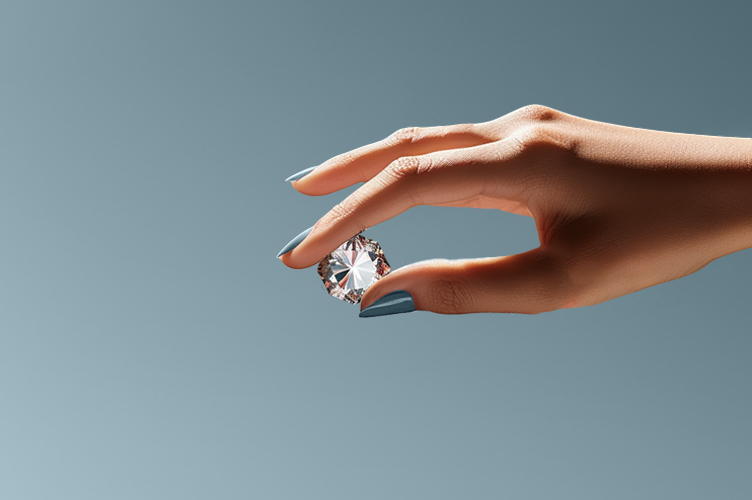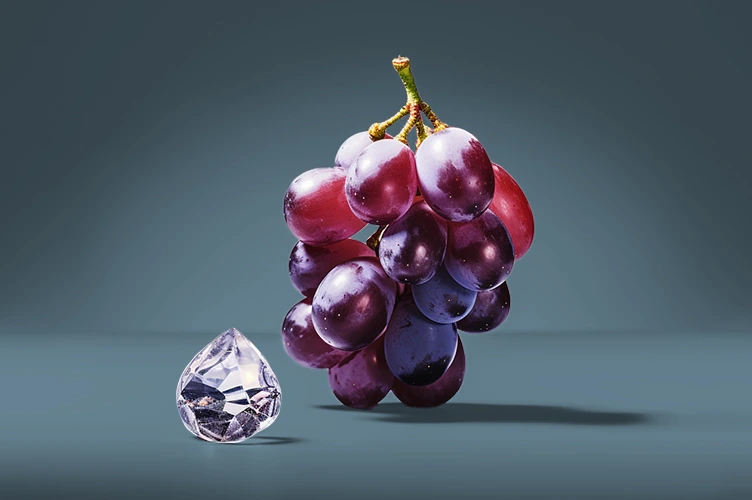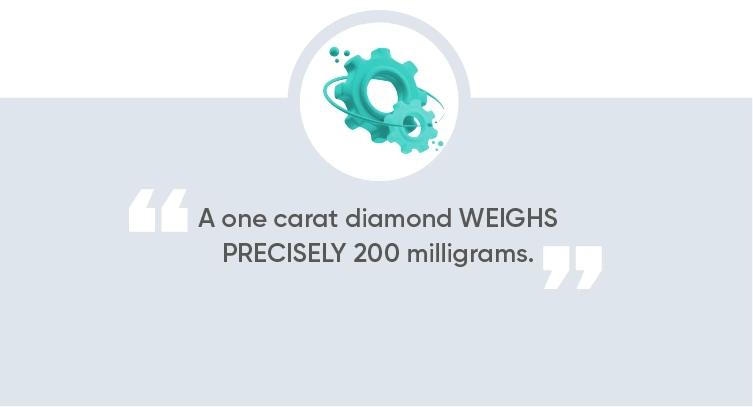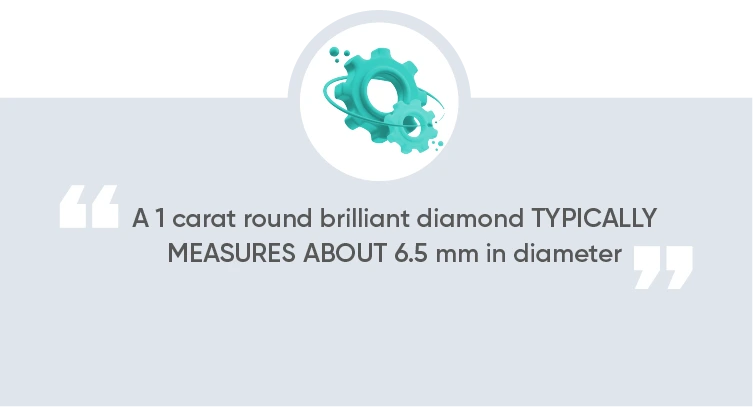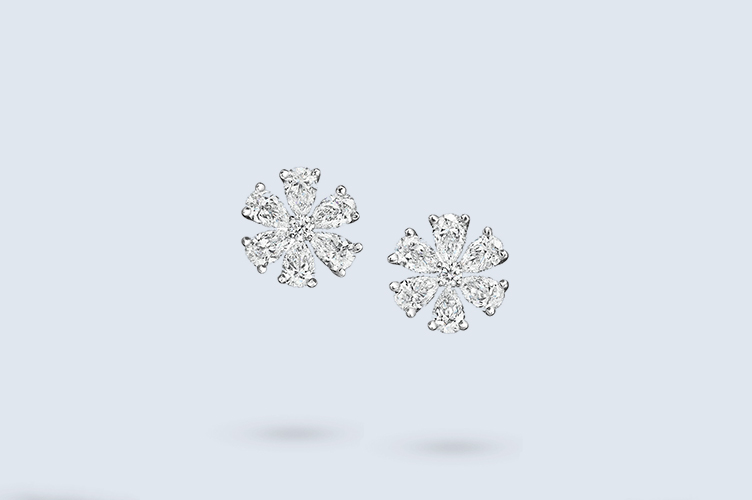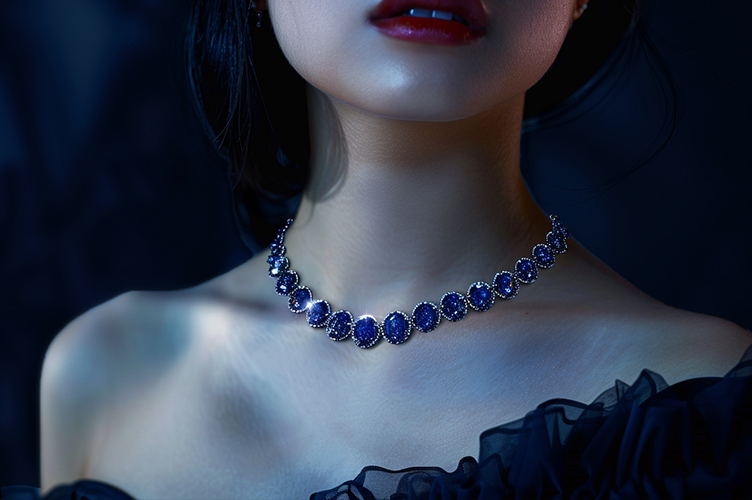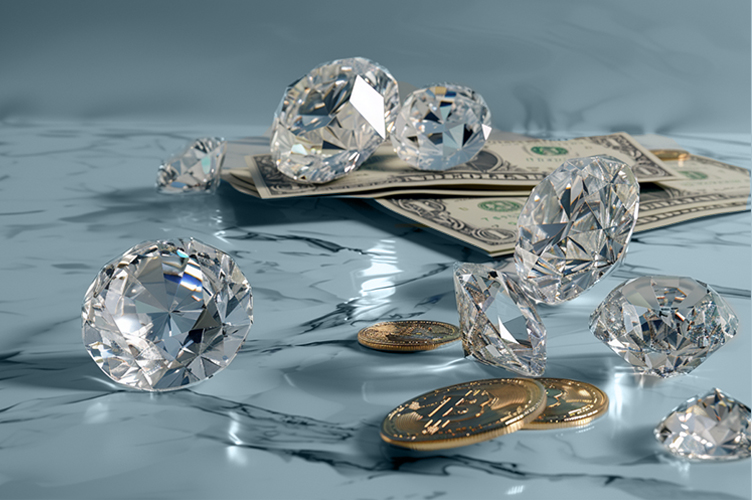In the market for a 1 carat diamond? Diamond size isn’t as straightforward as it seems.
Diamonds, those impressive gems that have captivated hearts for centuries, often come with size-related misconceptions. Exactly how big is 1 carat? It’s not an easy question because a carat is a unit of weight, not linear dimensions. This means you could have two separate 1 carat diamonds, and they could look totally different.
To help you shop, here’s everything you need to know.
What You Will Learn
How Big is a 1 Carat Diamond?
To truly understand a one carat diamond’s size, it’s important to understand both its weight and dimensions.
Before diving into the nuances, let’s establish a baseline. A one carat diamond weighs precisely 200 milligrams. This is a universal standard for measuring diamond weight. However, things get tricky when it comes to the actual dimensions and appearance.
Since natural diamonds can assume various shapes and cuts, the dimensions of a one carat diamond vary significantly. Generally, for a well-cut round diamond, a one carat stone boasts an average diameter of about 6.5 millimeters.
Beyond this, another factor influencing the size perception of a 1 carat diamond is the depth of the cut. A shallow cut can create the illusion of a larger diamond, while a deep cut may make a diamond appear smaller, influencing the stone’s overall sparkle. This underscores the importance of considering cut quality when selecting your perfect diamond, as it impacts both size and visual appeal.
Why Shape and Cut Matter for Diamond Sizes
Diamond shapes go beyond mere aesthetics; they can substantially influence the perceived diamond carat size, especially when compared to natural diamonds of the same weight.
Let’s explore this further with some concrete diamond shape examples:
Oval Cut vs. Round Brilliant
Take, for instance, an oval-shaped diamond and a round brilliant diamond, both weighing in at 1 carat.
While they share the same size, oval diamonds’ elongated nature makes them appear bigger than round diamonds of the same weight. This is because an oval’s ratio can create an optical illusion, elongating the stone and giving it a larger appearance.
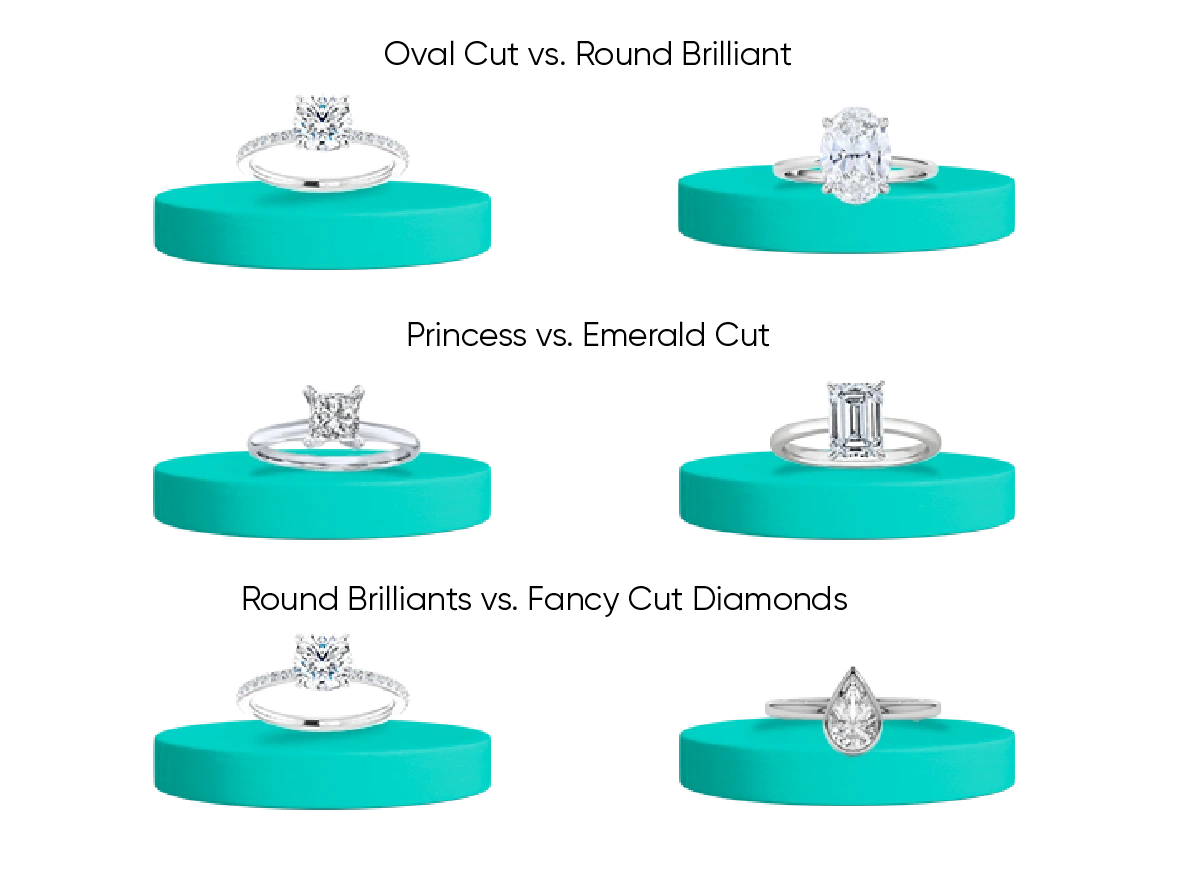
Likewise, consider a 1 carat princess cut diamond and a 1 carat emerald cut diamond.
The princess cut, with its sharp corners and square shape, can appear slightly smaller due to its angular design. On the other hand, the emerald cut’s rectangular shape elongates the diamond, making it look larger than its carat weight would suggest.
Round Brilliants vs. Fancy Cut Diamonds
A 1 carat round brilliant diamond typically measures about 6.5 mm in diameter, but the size of a 1 carat fancy cut diamond can vary depending on the specific cut and proportions. Fancy cut diamonds, which include various shapes like princess, emerald, and pear, may have different dimensions despite sharing the same carat weight.
So, when comparing a 1 carat round diamond to fancy cut diamonds, think about the specific shape and proportions to determine size accurately.
Understanding 1 Ct Diamond Size: Importance of Cut
When evaluating the size of a 1 carat diamond, it’s also essential you consider cut quality.
Well-cut diamonds radiate brilliance while accentuating the diamonds’ carat weights. However, a diamond with a lesser quality cut will look smaller than the average one carat diamond.
1 Carat Diamond Size: How Much Will It Cost?
Diamond prices can vary significantly based on carat size. A larger carat weight typically commands a higher price per carat in the diamond industry. As you move up the diamond carat size chart, the price per carat increases. Because of this, a two-carat diamond will likely cost more than double the price of a one-carat diamond with similar features.
To show the impact diamond carats have on pricing, try comparing two diamonds with identical qualities in terms of cut, color, and clarity. The only difference between these two diamonds is their carat size.
Ultimately, the diamond’s measurements, particularly its carat weight, play a key role in determining its value within the diamond industry. However, just because a diamond is bigger and more valued in the industry, it doesn’t mean it’s the best choice for you. While five-carat diamonds are undeniably breathtaking, one carat diamonds remain a practical choice for engagement rings, offering both beauty and affordability.
Still want that big diamond, but it’s not in the budget? Lab diamonds are an option for those wanting a larger diamond engagement ring without the premium price of mined stones.
Suggested Read: 2023 Diamond Price Trends | BriteCo Jewelry Insurance
How Big is a 1 Carat Diamond? FAQs
How big is a carat diamond?
A carat diamond, as specified in the diamond size chart, is a gemstone that weighs exactly one carat, equivalent to 200 milligrams.
How big 1 carat diamond?
A 1 carat diamond is about the size of a small grape, or around 6.5 mm in diameter.
What is the size of a 1 carat diamond?
The size of a 1 carat diamond is typically around 6.5 mm in diameter.
Protect Your Investment
Choosing the right stone for your ring isn’t only about diamond carat weight; the cut is also extremely important. Even a beautiful diamond with a modest carat weight can shine brilliantly with a well-executed cut.
Whatever your choice, whatever your diamond size, let us help protect your jewelry investment. At BriteCo, we offer comprehensive and cost-effective coverage. Our policies protect against loss, theft, and damage worldwide, ensuring your jewelry is safeguarded with confidence.
To learn more, get your free, personalized insurance quote.
Also Check:
How to Identify a Raw Diamond | BriteCo Jewelry Insurance
Heart Cut Diamonds: Love in Every Facet

